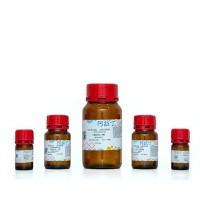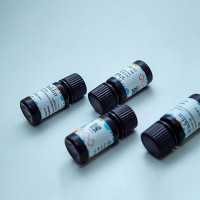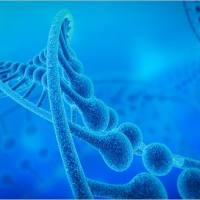阿维菌素试验方案
互联网
培养基
(1)斜面和分离培养基(g/L):可溶性淀粉10,(NH4)2SO4 2.5,NaC1 0.6,MgSO ・7H2O 1.2,K2HPO4・3H2O 3.0,CaCO3 3.0,琼脂粉 20,pH 7.2~7.4,用蒸馏水配制。
种子培养基(g/L):玉米淀粉25,花生饼粉1O,黄豆饼粉8.0,酵母粉5.0,酵母膏5.0,玉米浆4.0,CoCl2・6H2O 0.003,淀粉酶0.0025,pH7.O~7.2.用自来水配制。
发酵培养基(g/L):玉米淀粉7O,花生饼粉1O,黄豆饼粉8.0,酵母粉5.0,酵母膏3.0,玉米浆2.2,CoCl2・6H2O 0.003,淀粉酶0.0025,pH7.O~7.2.用自来水配制。
(2)见笔记本
培养方法
从平板上挑取灰色丰满的单菌落,转接于斜面,28℃培养7~9 d.待长出丰富的灰色孢子后,转接于种子培养液,220 r/min,28℃摇床培养28~30 h,接种5%于发酵培养液(250 ml三角瓶,装50ml发酵液),220 r/min,28℃摇床培养7~9 d,放瓶测定各指标。
3.诱导子制备
(1)藻多糖提取工艺
取海藻置于托盘放入恒温培养箱低温烘干,用电磨机打碎,使之成粉末状。用天平称取海藻粉50g放入500ml锥形瓶中加蒸馏水250ml放置于95℃水浴锅中,并隔10min晃一次,4h后取出,冷却到室温。离心取上清液,在离心管中加无水乙醇,得到沉淀再次离心,取沉淀(多糖),用蒸馏水冲洗数遍,于37度烘箱中烘干所得沉淀为粗多糖。
(2)1 多糖提取工艺紫菜一粉碎一紫菜干粉(40目)(加水(40-50倍)一微波加热浸提-粗滤-离心(4000r/min,10min )-浓缩-45℃真空千燥一紫莱多糖(微波功率200w,加热时间8min,水与紫菜液固重量比为50:1)
2 多糖含量的分析方法还原糖的测定:采用3.5一二硝基水杨酸比色法[51.总糖含量的测定:采用苯酚一硫酸比色法,以葡萄糖为标准品
3 紫菜多糖的计算多糖含量(%)=0.9x(总糖百分含量一还原糖百分含量)X100%,其中0.9是多糖的换算系数;紫菜多糖提取率(%)=紫菜多糖的含量/紫菜原料的质量x 100%.
(3)将用来制备诱导子的6种微生物分别接种到相应的液体培养基中进行摇床振荡培养.其中,粗糙脉孢菌、紫红曲霉在马铃薯葡萄糖液体培养基中25℃培养7 d;掷孢酵母、深红酵母在麦芽汁液体培养基中25℃培养3 d;N89在营养肉汤培养基中28℃ 培养5 d;A05在蛋白胨查氏液体培养基中28℃ 培养10 d、分别收集培养好的菌体细胞,按Ayers 方法来制备诱导子.取2 g(湿重)的菌体细胞,用蒸馏水、100 mmol/L和500 mmol/L(pH 7.2)的PBS缓冲液分别洗涤2次,超声破碎细胞,离心收集沉淀,沉淀再用500 mmol/L(pH 7.2)的PBS缓冲液和蒸馏水分别离心(4 000 r/min,5 min)洗涤8次,并重悬于蒸馏水中,0 1 MPa灭菌20 min后,置一20℃ 下储存备。
4. 效价测定
(1)层析法分离纯化,HPLC 法测定效价(任超,马�玻.阿维菌素B1a组分高产菌株诱变育种。生物技术通报,2005,4)
取发酵液5 ml,3 000 r/min,离心10 min,弃上清。加入丙酮2 ml,在旋涡式混合器上振荡1 min,静置10 min,重复3次。加入乙酸乙酯3 ml,振荡1 min,3 000 r/min,离心10 min,上清液备用。
吸取4Oμl上清液点样于GF254硅胶板上,然后层析。展层剂为:乙酸乙酯:三氯甲烷:二氯甲烷:无水:甲醇=9:9:2:1。层析后在紫外灯下观察,将斑点处硅胶刮入离心管中,加入2 ml无水甲醇,在旋涡式混合器上振荡1 min,静置10 min后3 000 r/min,离心10 min。
HPLC分析采用C18反向柱,流动相为无水甲醇:水=85:15,流速1 ml/min,检测波长244.6 nm。准确吸取5.0μl样品滤液进样,根据各组分的峰面积,对照标准曲线计算其含量,各组分之和即为总发酵单位。
(2)紫外分光光度法(对于斜面培养物)( 于秀莲,何建勇,白秀峰. 阿维菌素产生菌的诱变育种. 沈阳药科大学学报, 第21卷第3期)
将适量的斜面培养物铲出置于离心管中,加入丙酮2 mL,浸泡后再加入乙酸乙酯2 mI ,在旋涡式混合器上震荡2 min,3 000 r/min离心10 min,所得萃取液在754紫外分光光度计波长244 nm下,以甲醇为对照,测定样品的光密度,根据预先制备的光密度一阿维菌素标准曲线,计算阿维菌素的效价。
(3)HPLC 法(同上)
色谱柱为kromasil Cl8(200 mm×4.6 ram),流动相为甲醇-水(80:20),流速1 mL/min。
取发酵液7 mL于离心管中。3 000 r/min离心10 min,弃去上清液。加入丙酮2 mL。在旋涡式混合器上震荡2 min,静置10 min,再加入乙酸乙酯5 mL,震荡2 min,再以3 000 r/min离心10 min,得萃取液,用0.45 m的微孔滤膜过滤,准确吸取5.0 μl样品滤液进样,根据峰面积值进行计算
5.菌丝量(细胞干重),pH值
6.糖耗
总糖的测量:采用苯酚-硫酸比色法,以葡萄糖为标准品。
残糖含量:采用3、5一二硝基水杨酸比色法。
7.电镜、细胞膜通透性
8.活性氧(ROS)
9.质谱对比分析代谢物组变化
Enhanced production of avermectin B1a by medium optimization and glucose feeding with Streptomyces avermilitis
Xu Zhinan, Cen Peilin. Bioprocess Engineering 20 (1999) 67-71 @Springer-Verlag 1999
Culture condition and media
S. avermilitis IP 842 was maintained on YMS medium [12].Slant culture was incubated for 5±8 days at 28 _C. For avermectin fermentation in shake flasks, spores and mycelia were scalped from the agar surface (15 _ 150 mm test tube) in 5 ml sterile water. 2 ml of such mixed suspension was used to inoculate 30 ml seed medium in 250 ml Erlenmeyer flask. The seed medium contained (g/l in water) soluble corn starch 30; yeast meal 15.0; corn steep liquor 5.0; KH2PO4, 0.4; PEG 2000, 2.5; pH 7.2 before autoclaving. After 24 h of incubation at 28.C on a shaker operating at 220 rpm, 4 ml of the seed culture was used to inoculate 40 ml of CSYC medium (Corn starch, Soybean meal, Yeast meal, Corn steep liquor) in 500 ml Erlenmeyer flask. Medium CSYC consisted of (g/l in water) corn starch, 60; soybean meal, 10.0; yeast meal, 15.0; corn steep liquor, 5.0; KH2PO4, 0.5; PEG 2000, 2.5; pH 7.2 before autoclaving. Corn starch was liquidated with 0.05% a-amylase before addition. After 5 days of incubation at 28 _C on a shaker operating at 220 rpm, the broth was taken for analysis of avermectin B1a and total avermectins (AVMs). It should be noted here that the seed medium and fermentation medium CSYC have been preliminarily optimized for high avermectin production [13].
In order to investigate the effects of metal elements on B1a production, CoCl2; FeSO4; ZnSO4 and MgSO4 were added to the control medium respectively. Different PEG (1000, 2000 and 4000) were added in the control medium to study the effect of PEG on B1a.
Fermentation studies in 10 liter fermentors
An optimized complex production medium was used for batch and fed-batch cultivation of S. avermilitis IP 842. Two hundred ml of 24 h seed culture was used to inoculate 6 liters of production medium in a 10-liter Braun Biostat B fermentor. During all the experiments, the agitation speed and air flow rate were adjusted as required, in order to keep the dissolved oxygen (DO) level above 20% of saturation. DO was monitored by a sterilizable electrode. The pH of fermentation medium was 7.2 before autoclaving. Samples were taken to measure packed mycelium volume, total sugar and reducing sugar, total avermectins (AVMs) and avermectin B1a. Two different modes of glucose feeding were tested in the fed-batch fermentations according to a predetermined schedule.
Analytical methods
Mycelia growth
Mycelia growth was estimated by measuring packed mycelium volume. After the centrifugation of 10 ml of fermentation broth at 4500 rpm for 15 min, the packed volume was measured. ?(DCW)
(2)The total sugar
The total sugar concentration in the culture broth was measured by the phenol-sulfuric acid method [14].
(3)Reducing sugar
Reducing sugar concentration in the culture medium was determined with 3,5-dinitrosalicyclic acid reagent method with glucose as a standard [15].
(4)The quantities of total avermectins
Equal volume of methanol was added to the sample and the mixture was shaken for 30 min to extract avermectins from the mycelia. A 10ul sample of supernatant of methanol extract was examined by HPLC. A nova-pak C18 column (Waters Ltd, USA: 3.9 mm in inner diameter, 150 mm in length) was developed with methanol water (85:15 [vol/vol]) at a flow rate of 0.8 ml/min in ambient conditions. The quantities of total avermectins (AVMs) were calculated from the integration value at 246 nm using an authentic sample of avermectin B1a as a standard [12]. The B1a proportion among avermectins was calculated as a ratio of B1a peak area and the total area at 246 nm.
诱导子的制备
待查:南昌霉素检测 涂国全,高勇生.江西农业大学学报.1990,15:90~96
注:阿维菌素产生菌的菌落特征很不稳定,存在严重的自然分化现象,在不同菌落形态的分化菌株中,其中产灰色孢子的菌株能产生阿维菌素,但即使经单孢子选出的灰色菌落经传代后,仍分化出不产阿维菌素的白色和光秃菌落,因此诱变处理后应从分离培养基上挑取产抗能力强的灰色孢子进行发酵培养,以平衡经常出现的发酵单位不稳定现象。






